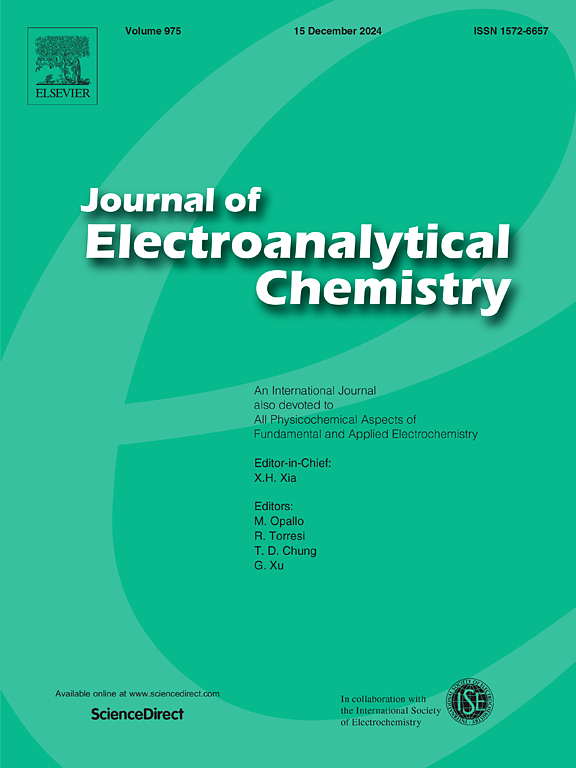Electrochemical dissolution behavior and characterisation of passivation films of PH13-8Mo in NaNO3
IF 4.1
3区 化学
Q1 CHEMISTRY, ANALYTICAL
引用次数: 0
Abstract
PH13-8Mo stainless steel, renowned for its superior physical and mechanical properties due to advanced smelting processes, is widely employed in high-stakes aerospace applications, including nuclear energy systems, rocketry, and critical aerospace components. However, its high strength and hardness present challenges in machining, especially for intricate structural shapes. This study investigates the electrochemical machining (ECM) of PH13-8Mo, emphasizing its dissolution characteristics and the behavior of key constituent elements—iron (Fe), chromium (Cr), nickel (Ni), molybdenum (Mo), and aluminum (Al)—in corrosion processes. Techniques such as open circuit potential (OCP), linear sweep voltammetry (LSV), and electrochemical impedance spectroscopy (EIS) were employed to characterize each element’s contribution to passivation. Morphological analysis indicated that residual surface austenite dissolves progressively with increased current density, exposing the underlying martensitic phase. Post-dissolution EIS analysis revealed that Fe and Ni facilitate secondary passivation, whereas Mo significantly enhances passivation film density. A mechanistic dissolution model is proposed to elucidate the progressive dissolution behavior of PH13-8Mo.
PH13-8Mo 在 NaNO3 中的电化学溶解行为和钝化膜的表征
本文章由计算机程序翻译,如有差异,请以英文原文为准。
求助全文
约1分钟内获得全文
求助全文
来源期刊
CiteScore
7.80
自引率
6.70%
发文量
912
审稿时长
2.4 months
期刊介绍:
The Journal of Electroanalytical Chemistry is the foremost international journal devoted to the interdisciplinary subject of electrochemistry in all its aspects, theoretical as well as applied.
Electrochemistry is a wide ranging area that is in a state of continuous evolution. Rather than compiling a long list of topics covered by the Journal, the editors would like to draw particular attention to the key issues of novelty, topicality and quality. Papers should present new and interesting electrochemical science in a way that is accessible to the reader. The presentation and discussion should be at a level that is consistent with the international status of the Journal. Reports describing the application of well-established techniques to problems that are essentially technical will not be accepted. Similarly, papers that report observations but fail to provide adequate interpretation will be rejected by the Editors. Papers dealing with technical electrochemistry should be submitted to other specialist journals unless the authors can show that their work provides substantially new insights into electrochemical processes.

 求助内容:
求助内容: 应助结果提醒方式:
应助结果提醒方式:


